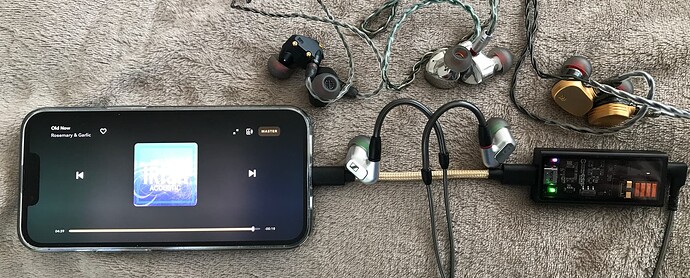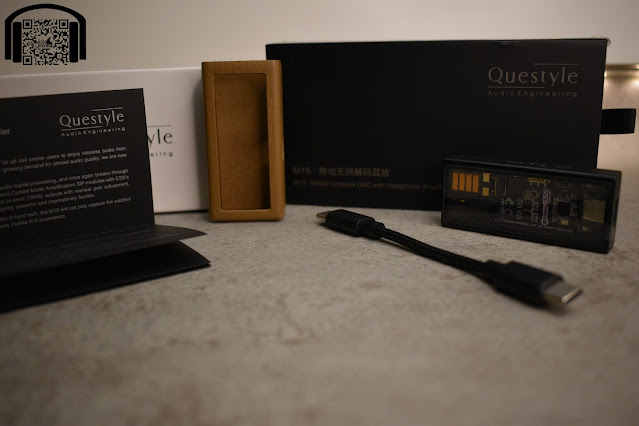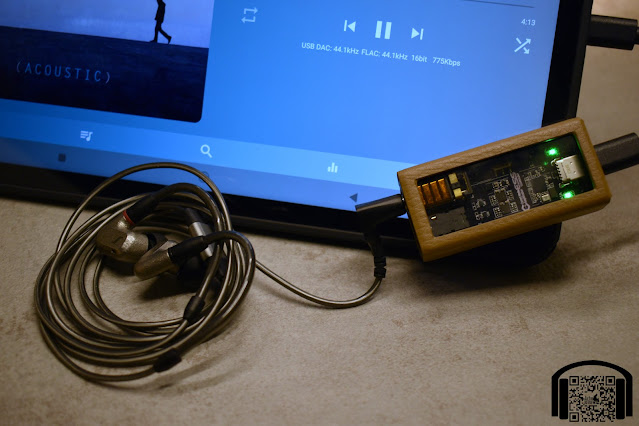The Questyle M15. The end to a long dongle journey?
I recently acquired a Questyle M15, one in a list of many dongles I have tried in search of “the One”.
My journey into portable audio gear started as a hobby to keep me from losing my mind during lockdown.
Since then I have been able to try only a small fraction of what is available in an ever increasing and improving market and generally gear orientated to my modest budget.
That being said I do like to get the best bang for my buck and to that end I tend to do a lot of research into an item before I purchase.
I have tried a number of dongles along the way looking for the one that would really grab my attention. From the cheap and cheerful JCALLY JM40 I bought for my daughter for school to the much lauded Audioquest Dragonfly Red that I managed to acquire on the cheap and ended up pairing with the original Tri i3s who planar driver really appreciated the extra power the Red provided, then giving to my son as I found it overly warm a sound signature amongst other faults. Also others like the Hiby FC3, a great cheap avenue to Tidals MQA or the Earmen Eagle of which I was lucky to get one of the first 500 models which has the chip from the Sparrow and renders MQA and is a very elegant and tidy dongle with good amplification and a very pleasing neutral sound signature and not forgetting my ifi Hip DAC a less portable option having its own battery but huge amplification coupled with the warm Burr Brown DAC chip signature. All good options and highly regarded, but all lacking in one way or another from what I would consider a great sound.
By great sound I do not mean to imply that I am a great audio critic. Far from it, too many years headbanging in front of towering speaker stacks have left these old ears lacking in refinement. But I have quite an eclectic taste in music. Music that is often very complex and intense and intricate and I want to be able to hear all those nuances in my everyday listening. When at home I have my desktop setup of Gustard X16/H16 coupled with Hifiman Sundara`s or my living room setup of Willsenton R8 KT88 push-pull valve amp into Triangle Borea BR03 speakers. For my vinyl I use a Project Debut Carbon USB.
Mostly I have gone for dongles that at least render MQA as I use Tidal as my streaming service. This was one of the factors that led me to the Questyle line of Amp/DAC`s.
Quite a few of the High End amp manufacturers have started to get in on the dongle craze of late. Cayin brought out the RU6, Luxury and Precision the W1 and 2 Astell and Kern the PEE51 and 52 and Questyle the M12 and now the M15.
Of these only the Questyle can render MQA so when I was looking to pick a contender from this new field of dongles in March, as a cheeky birthday gift to myself, it was the Questyle that caught my attention.
I purchased a Questyle M12 from Hifigo and it arrived in record time and my initial response was most favourable when used with my sons Tri i3s or my wifes BQEYZ Spring 2s but then I encountered a problem. When paired with my favourite IEMs the Mangird Teas, a 1DD/6BA setup that normally sounds exquisite, I encountered a clicking. Not just an occasional click but a constant tick, tick, tick. Further I found that it only happened with the MIUI phone software used by Xiaomi. I documented all of this and did a little video highlighting the problem and sent it off to Questyle. They got back to me very quickly and fixed the problem temporarily by rolling the M12 back to an older version of the firmware and they assured me that a new firmware was in the works and would be available soon. They also asked if I would be interested in reviewing their new M15 dongle Amp/DAC an upgraded, and more expensive, version of the M12 with the addition of a 4.4mm pentaconn balanced output and a gain switch.
I of course agreed. And a week later I received my M15.
The packaging is almost identical to that of the M12. The same sleek black box with a small cloth tab to allow ease of opening of the sliding tray. Inside the M15 is displayed in protective foam.
The first thing I noticed was that it is considerably larger than the M12, by about 250%. This was not really a problem though as the M12 is the smallest of dongles I have. In the end the M15 is not much larger than the Dragonfly Red.
The next thing I noticed was the glass front panel that allows a view of the inner workings of the M15. I have to admit that this really appealed to the geek in me, though my wife was less impressed.
Beyond that the box contains underneath a short Type C to Type C USB cable for connecting to your phone and a Type A to Type C for connecting to a PC or laptop. There was no included lightning cable but as an Android user this was not an issue.
And that is it. The packaging is simple, elegant and ecological.
The flip side of the M15 is similar to the M12 with the matte black finish and the Questyle logo in print.
On one end you have your USB C output and on the other both 3.5mm single ended output and 4.4mmPentaconn balanced output.
On one side you have a gain switch for low or high gain to better match the headphones or IEM`s you are using. A much welcome addition to the M15 that was not present on the M12.
Instead the M12 had a Smart Detect, Auto-Gain feature that was meant to match the impedance of your headphones with the amplification from the M12s Current Mode Amplification. This worked well with my selection of IEMs but when I tried out my Hifiman Sundaras with their planar magnetic driver and low impedance of around 37ohms I found that the M12 did not switch into High Gain Mode` and therefore did not put out enough power to drive them to very loud volumes.
Not so the M15.
The first thing I did was to try it out with my Xiaomi phone and my Mangird Tea IEMs and I was pleased to find none of the clicking problems I had experienced with the M12s firmware. Volume wise I was only able to take my phones volume to the 50% mark.
The second thing I did was to try it with my Sundaras. At first I thought the M15 was not up to the task, but only until I realised that I had not switched it to High Gain` at which point it provided more than sufficient power. I really must start remembering to turn my phone volume down when I change devices.
The M15`s Current Mode Amplification pumps out copious amounts of power. Even for more power hungry drivers like planars. What is more it does not get muddy and lose coherence at higher volumes like I have found with many dongles. Imaging was excellent even with the power turned up to almost ear bleeding levels.
Satisfied that I had plenty of power to play with I sat down for a more critical listen.
I lost hours!
I had initially only planned to spend a couple of hours but the next thing I knew it was 5am and work was but a few hours away. This Amp/DAC dongle is amazing! I was sat in bed streaming via my mobile and it sounded as good as most desktop systems I have tried and indeed better than a great deal of living room setups. I was in audio heaven.
The basic sound signature is neutral to the point of being totally transparent. You get exactly what was recorded as it was recorded. Nothing is too forward or over expressed.
The soundstage is wide though not overly but it also has depth which gives it a three dimensional presentation. You can really hear and feel the spaces between the instruments.
And all of this on the 3.5mm SE output!
Next day I swapped out to 4.4mm balanced Pentacon cables on my Sundaras and my Mangird Teas and to be honest the only difference I noticed with the Tea`s was that I could now seriously damage my hearing if I was not careful with the volume. This was quite a surprise as, from my reading, most dongles with both tend to pay less attention to the 3.5mm output but this is clearly not the case with the M15.
With the Sundaras there was a noticeable increase in volume and power which opened up the planars in a way I have only ever experienced before with desktop setups. This thing actually comes close to my Gustard X16/H16 setup in both reference level clarity and precision and whilst it does not have quite as wide a soundstage it has more than enough amplification to drive the planar`s to their true potential.
Musically the M15 is exactly what I was looking for. I like an Amp/DAC to be neutral and not to colour the original recording. I want to hear the recording exactly as the artist recorded it. And in this the M15 excels. Nothing is too forward or recessed. Bass comes in with just the right amount of thump, trebles are not too shrill or fatiguing and as for the mids both male and female vocals are right on par.
Whilst this may seem a little dull for some, doing this well is a considerable challenge if some of the competition are what you go by.
The M15 provides a level of detail in the music that is rarely heard in a dongle. From the simple acoustics of the Blister in the Sun by the Violent Femmes to the complex musical morass of Pictures of a City by King Crimson the M15 delivers like no other portable device I have tried. You can hear the guitarists fingers slide along the frets.
Bird and Diz sang like never before Buddy Ritchs most excellent percussion and Curly Russells Bass on Bloomdido always gives me that warm fuzzy tingle. Sat back in my chair I almost felt like it was coming from my main system. I got the same euphoric waves of emotion running through me that I have come to expect from high quality audio listening.
It did not matter what I threw at the M15 it handled it well. From Reggae, Dance, Rock, Punk, Psychedelia, Avant Garde and Jazz it handled all with ease delivering a superb playback. I even loaned it to an audiophile friend who listens almost exclusively to classical as I have very little experience in that genre and he was delighted with the M15.
I have taken the M15 through a sizable chunk of my catalogue over the last few weeks and have been able to find very little to fault it. After such a magical musical journey griping about volume controls or a tempered glass screensaver or a case as standard seems petty, though I think the M15 would benefit from volume controls I always have difficulty finding just the right volume level with my phone. I have found that using the hardware volume control on the Hiby music app is far more precise than my phones volume slider.
So is the Questyle M15 “the One”?
I can only speak from personal experience but I feel the M15 has checked all the boxes. It provides amplification sufficient to drive a set of planar over ears to their true potential whilst at the same time being delicate enough for the most sensitive IEM`s. It delivers a transparent, reference level playback with great soundstage, imaging, clarity and resolution in both 3.5mm SE and 4.4mm balanced outputs. It is not overly power hungry on your phone. It is elegant and whilst being larger than most dongles it still classes as such in that it is readily portable.
Simply put the M15 is the best dongle Amp/DAC I have ever come across and whilst I am always interested in testing new tech I feel that I shall no longer be actively seeking a replacement. The M15 has defiantly become my go to option for a portable Amp/DAC.










